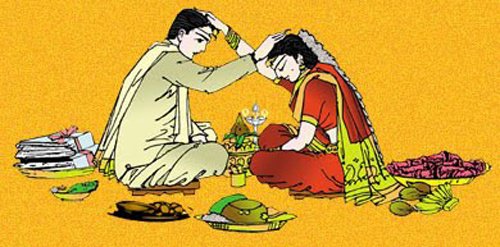Snathakam : An Important Ceremony Performed Before Wedding
Snathakam : An important ceremony that takes place one day before the wedding day in Hindu tradition. It is conducted either at the groom’s home, the wedding hall, or a place of residence, and it involves priests performing rituals. During Snathakam, Brahmins perform Gotra Pravaras with the groom for purification of the body and propitiation.
Snathakam & Purpose
The purpose of Snathakam is to prepare the groom for the transition from Brahmacharyam (student life) to Grihasthashram (married life). It signifies the acceptance of the Guru (Purohita) and the beginning of the household life. The priest imparts teachings from the Taittiriopanishad, such as the importance of truth, righteousness, and intelligence.
The Guru blesses the groom, encouraging him to learn the subtleties of Dharma (righteousness) from elders and choose a path that suits him. This ceremony prepares the groom for married life and the responsibilities that come with it.
Snathakam involves reciting mantras, and it is believed that by reciting these mantras, all worries and impurities are shed. There are various slokas and prayers recited during Snathakam, expressing wishes for a prosperous and virtuous future.
In addition to the rituals, the bride’s father plays a significant role in the Snathakam ceremony. He presents the groom with clothes, sugarcane, jaggery, and a special drink. The sugarcane or jaggery is used symbolically, representing Cupid’s bow and is believed to direct the celibate groom’s mind towards married life. The drink, often made with sugarcane juice and pepper, is believed to promote good health and vitality.
Snathakam is a significant step in the marriage ceremony, where the bride’s father symbolically hands over the responsibility of his daughter to the groom. It signifies the completion of the first stage of the wedding rites.
The term Snathakam also refers to the graduation ceremony of Brahmacharis (celibate students). It is associated with completing education and returning after traveling with the Guru. The ceremony carries a sense of atonement for any wrongs committed during the celibate phase.
During Snathakam, the groom takes various vows, including honoring and respecting parents, teachers, and guests. He also pledges not to engage in inappropriate behavior, such as looking at women with lustful intentions. The groom’s body is symbolically divided into a divine body and a demonic body using a cord, representing the purity and control over desires.
After taking the vows, the groom proceeds to the wedding venue, where he performs ablution with a mixture of hot and cold water. This is believed to prevent diseases and provide relief. The groom also offers gifts to himself and the teacher, symbolizing gratitude and respect. Afterward, he wears the gifts and leaves for further studies, sometimes symbolized by a journey to Kashi (Varanasi), a city associated with spiritual learning.
It’s important to note that customs and rituals can vary among different Hindu communities, regions, and personal beliefs, so specific practices may differ.
Also Read : Molatradu : A Significant & Sacred Practice In Hindu Tradition

